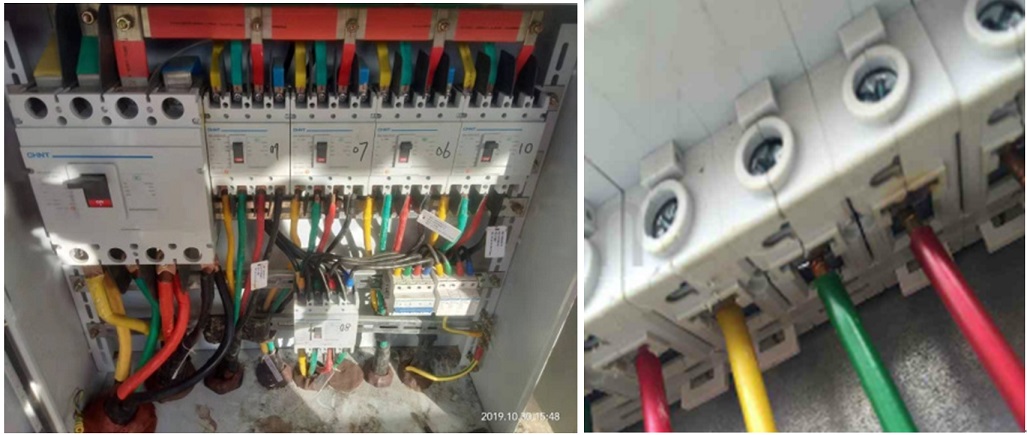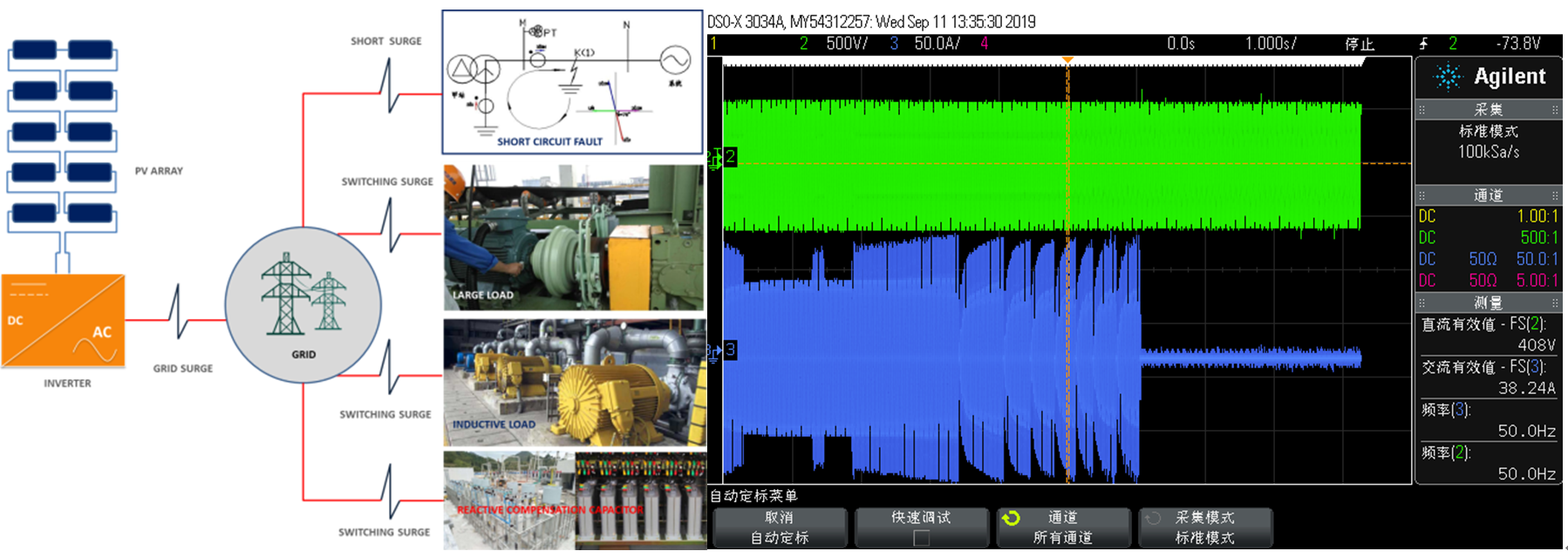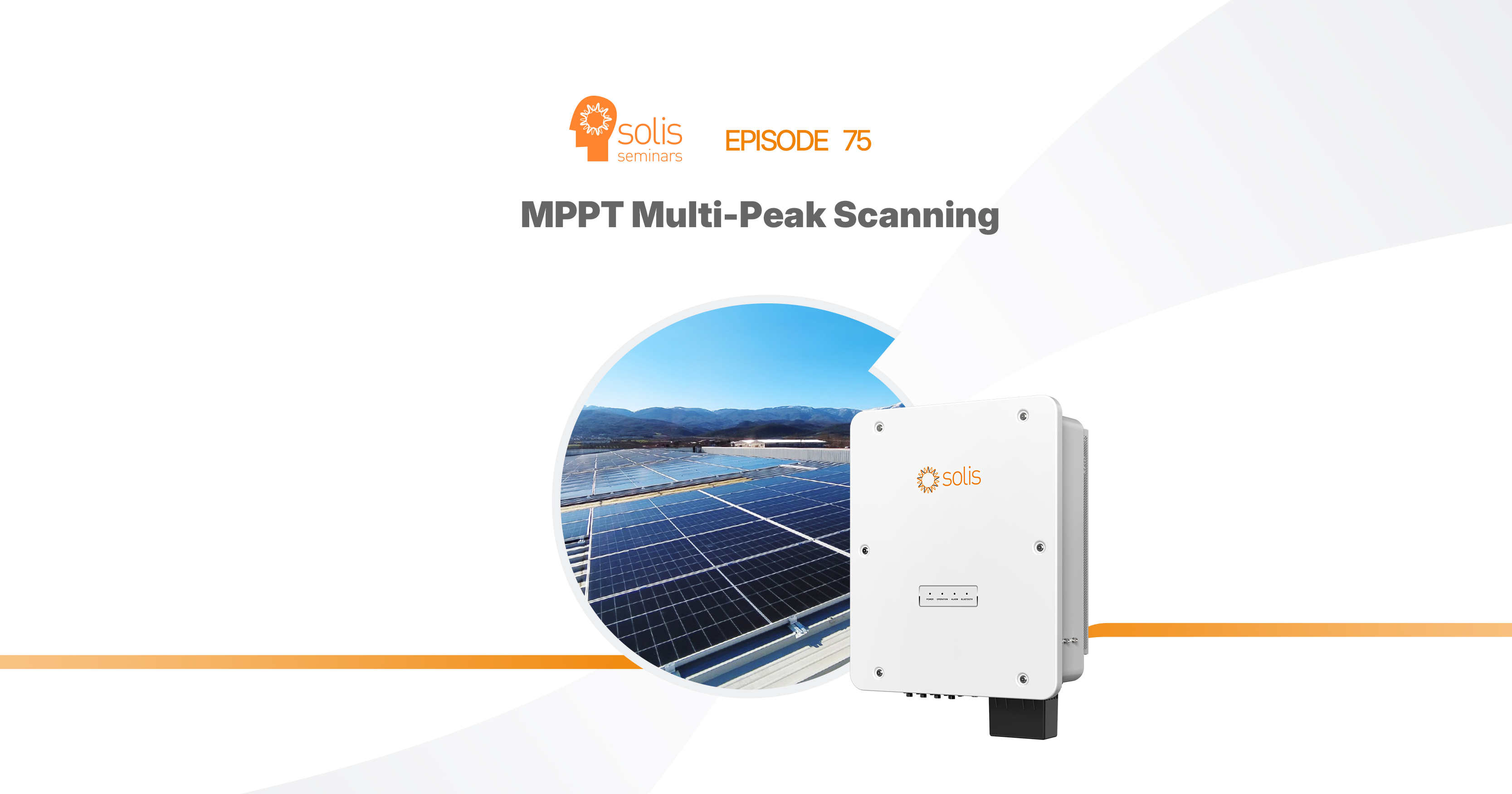Background
In PV systems, grid over-voltage faults
(OV-G-V0X) can occur frequently, especially in areas with weak grids and
high solar PV grid-connected capacity. Such faults are common and in
this episode of Solis seminar, we will share with you the causes of
OV-G-V0X", and how to rectify the issue.
Fault Description
During
normal operation of the inverter, it will monitor whether the grid
voltage exceeds the grid-tied standard voltage range in real time. If
the grid voltage is higher at a certain time, the inverter will be
disconnected from the grid and display the error message OV-G-V0X (X
value 1~4).
Types of Error Message and their Meaning
"OV-G-V01": the grid voltage value is higher than the standard Vup01 (standard first step overvoltage value);
"OV-G-V02": the instantaneous grid voltage value is higher than 1.35 times the peak value of the rated AC voltage
"OV-G-V03": the average value of the grid voltage within 10 minutes is higher than the standard value
"OV-G-V04": the grid voltage value is higher than the standard Vup02 (standard second step overvoltage value)
Causes of Grid Over Voltage Errors
PV System Issues
When the "OV-G-V0X" message appears, it is recommended to check the following first:
1)
Is the inverter too far away from the grid connection point? This will
cause the voltage difference on the AC terminal side of the inverter to
increase, which will exceed the voltage range set by the inverter
standard
2) Are multiple inverters concentrated in one grid
connection point? For example, multiple single-phase inverters connected
to the same phase of the grid can cause the voltage of this phase to
increase.
3) Are there a lot of solar systems installed in the same
area within the power supply range of a transformer? If the grid load
consumption capacity is small, the excess electrical power will not be
consumed and this will cause the grid voltage to rise.
4) The wiring of the AC breaker is loose.

Figure 1. Loose connection or poorly connected cables
Grid Surge
In
addition, we need to confirm whether there is any large-scale
electrical equipment in the owners electrical load, such as high-power
motors, processing machine tools, etc. The switching of this equipment
will impact and interfere with the grid, causing excessive grid
harmonics and abnormal grid voltage fluctuations, exceeding the
tolerance range of the inverter. To protect itself, the inverter will
disconnect from the grid and display the OV-G-V0X message.

Figure 2. Surge and over-voltages of the grid waveform caused by various load shocks
Possible Inverter Related Causes
1)
The inverter grid-standards are set incorrectly and do not meet the
on-site grid requirements, resulting in frequent grid over-voltage
reports
2) Abnormal internal sampling of the inverter results in a
large difference between the displayed grid voltage and the actual
value, resulting in the message "OV-G-V0X"
3) Loose connection or poorly connected AC cables of the inverter
4) Wiring error, connect line A/B/C to N or PE interface of the inverter AC terminal.

Figure 3. Wiring error, connect line A/B/C to N or PE interface of the inverter AC terminal
Solutions
If Caused by the PV System
1) Select the nearest grid-connected solution; or replace the AC cable with a larger cable
2) Divide the grid-connected capacity of the project evenly on each phase of the grid.
3)
For the issue of excessive installed PV capacity in the same area, it
is recommended to reduce the capacity of the PV system or increase the
capacity of the transformer
4) For the incorrect connection of AC cables, identify the correct and securely phases, neutral, ground and rewire the system.
If Caused by Grid Surge
1) Check whether there is "GRID SURGE" in the inverter alarm message
Main Menu→Advanced Info→Password 0010→Alarm Message
2)
Use an oscilloscope to test the voltage and current waveforms on the AC
side of the grid and provide the readings to your local Solis service
contact. Solis will provide you with a suitable solution based on the
readings.
If Caused by the Inverter setting
1) Adjust the grid connection standards to match the on-site grid conditions
Setting single-phase inverter grid-tied standard:
A. Main Menu→Advanced Settings→Password 0010→Switch ON/OFF→OFF;
B. Advanced Settings→Password 0010→Select Standard→Select Standard Code→Save & Send;
C. Advanced Info→Password 0010→Running Message→Standard NO.→Standard Code is correct;
D. If the modification is not successful, repeat step B.
Setting three-phase inverter grid-tied standard:
A. Main Menu→Advanced Settings→Password 0010→Switch ON/OFF→OFF;
B. Advanced Settings→Password 0010→Select Standard→Select Standard→Save & Send;
C. Advanced Info→Password 0010→Running Message→Standard NO.→Standard Code is correct;
D. If the modification is not successful, repeat step B.
2) Set
the over-voltage drop power mode to reduce the output power of the
inverter through a gradient to stabilize the output voltage and reduce
the overall power generation loss.
Setting inverter over-voltage power functions:
Main
Menu→Advanced Settings→Password 0010→STD. Mode Settings→Working Mode
Set→Work Mode:(Volt-watt→Voltage1~4: P-Limit1~4: )→Save & Send
3)
Abnormal internal sampling of the inverter. Modify the display value
of the grid voltage through the compensation parameter setting in the
inverter
Setting inverter AC voltage parameters:
Main
Menu→Advanced Settings→Password 0010→Compensation Set→Voltage
Parameter→Setting value of Vg-A-Zero, Vg-B-Zero, Vg-C-Zero→Save &
Send.
If you have any other questions, you can contact Solis support engineers or go to www.solisinverters.com/aftersales.html
Solis is one of the world's largest and most experienced string inverter manufacturers with a global network of service teams.
Summary
Grid
over-voltage is a relatively common type of problem. When this fault
occurs in a solar PV system, it needs to be eliminated in good time
following the above trouble shooting steps. Follow the solutions
provided and, if needed, utilize the support of your local Solis support
team to restore the system to normal operating conditions.

 中国
中国
 India
India
 Việt nam
Việt nam
 Australia
Australia
 대한민국
대한민국
 پاکستان
پاکستان
 ประเทศไทย
ประเทศไทย
Filipino
 Malaysia
Malaysia
 Bangladesh
Bangladesh
 Sri Lanka
Sri Lanka
 Indonesia
Indonesia
 Узбекистан
Узбекистан
 Ireland
Ireland
 Česká republika
Česká republika
 Türkiye
Türkiye
 United Kingdom
United Kingdom
 France
France
 Deutschland
Deutschland
 Nederland
Nederland
 España
España
 Sverige
Sverige
 Italia
Italia
 Polska
Polska
 Україна
Україна
 Português
Português
 България
България
 Magyarország
Magyarország
 Lietuva
Lietuva
 Ελλάδα
Ελλάδα
 Suomen tasavalta
Suomen tasavalta
 United States
United States
 Canada
Canada
 México
México
 Brasil
Brasil
 República de Chile
República de Chile
 South Africa
South Africa
 المملكة العربية السعودية
المملكة العربية السعودية
 الجمهورية اللبنانية
الجمهورية اللبنانية
 امارات عربية متحدة
امارات عربية متحدة
 اليمن
اليمن
 المملكة الأردنّيّة الهاشميّة
المملكة الأردنّيّة الهاشميّة
 جمهورية مصر العربية
جمهورية مصر العربية
 la République Tunisienne
la République Tunisienne
 Kenya
Kenya
 Tanzania
Tanzania
 Nigeria
Nigeria
 Other Countries and Regions
Other Countries and Regions






